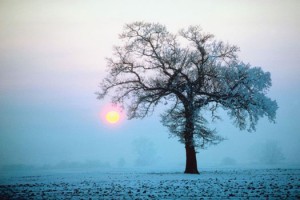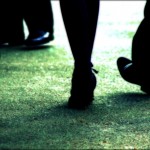 [Note: When I wrote this, I got up around 10 a.m. and saw no benefit from the earlier sunrise. Now I get up at 7, so it works better for me now. But I still hate the earlier sunset!]
[Note: When I wrote this, I got up around 10 a.m. and saw no benefit from the earlier sunrise. Now I get up at 7, so it works better for me now. But I still hate the earlier sunset!]
This weekend marks the end of daylight-saving time (DST) for the year. Though winter doesn’t technically begin for another month and a half, this always feels to me like the point where things change. Every year, at the beginning of warm weather, I encourage everyone to get out in the sun and experience nature, but it’s important to respect the rhythms of nature and our body in cold weather too.
So I want to talk to you about two things: SAD and DST.
Next week, I’ll focus on SAD, but for now, just a few thoughts about daylight-saving time. DST is designed to correct the rigidity of the modern world’s scheduling. Before the Industrial Revolution, most people simply measured their day by the sunrise and sunset. Working and eating and sleeping times adjusted naturally to the changing seasons. This fit well with the high cost and poor quality of nighttime lighting, and with the fact that in an agrarian culture, there was a lot of work to do in the summer, and not much to do in the winter.
(As I am living right now in the midst of the Hurricane Sandy blackout in downtown Manhattan, I’m experiencing this first-hand! Once the sun goes down, doing things by candlelight is a challenge. I’ve been going to sleep several hours earlier simply because there’s not much to do and it’s not that easy to do what there is.)
Today, most people’s jobs are disconnected from nature; nearly everyone works indoors on the same schedule year-round. Daylight-saving time adds more daylight after work to shop and play, and reduces energy consumed by artificial lights at night.
But on the other end, setting the clocks back an hour when DST ends for the year means that (literally) overnight, most of us will start getting off work to find it already dark. And I don’t know about you, but I don’t get up by 6:30 in the morning, so setting the clock back means I simply lose an hour of daily sunlight. If you work indoors all day, you may see virtually no natural sunlight until the days have lengthened enough again next year.
Personally, I guess I’d like to see DST stay in effect all year. Stealing an hour of sunlight from the wee hours and adding it to the evening works for me year-round.
The other big problem with daylight-saving time is that the shift of a full hour happens all at once, so your body can’t absorb it easily. It’s a mini-case of jet lag twice a year. The time change confuses the circadian rhythms of your body just when it’s trying to adapt naturally to the changing season. At least in the fall, you’re “gaining” an hour (that is, the day of the change has 25 hours in it, so in theory you can sleep an extra hour), but it still messes up your internal clock.
Standard advice for dealing with jet lag applies equally well to the coming time change. Shift your sleeping routine by 20 minutes each day for the three days prior to November 4, so, when the clock is moved back, you’ll wake up comfortably that Sunday morning at your usual time. This doesn’t erase the problem, but it softens the blow. Also, eat a healthy diet, and attend to any of your other routines, so you’re as fit as possible heading into the change.
Do you have any tips to deal with the DST shift? Leave a comment below.












